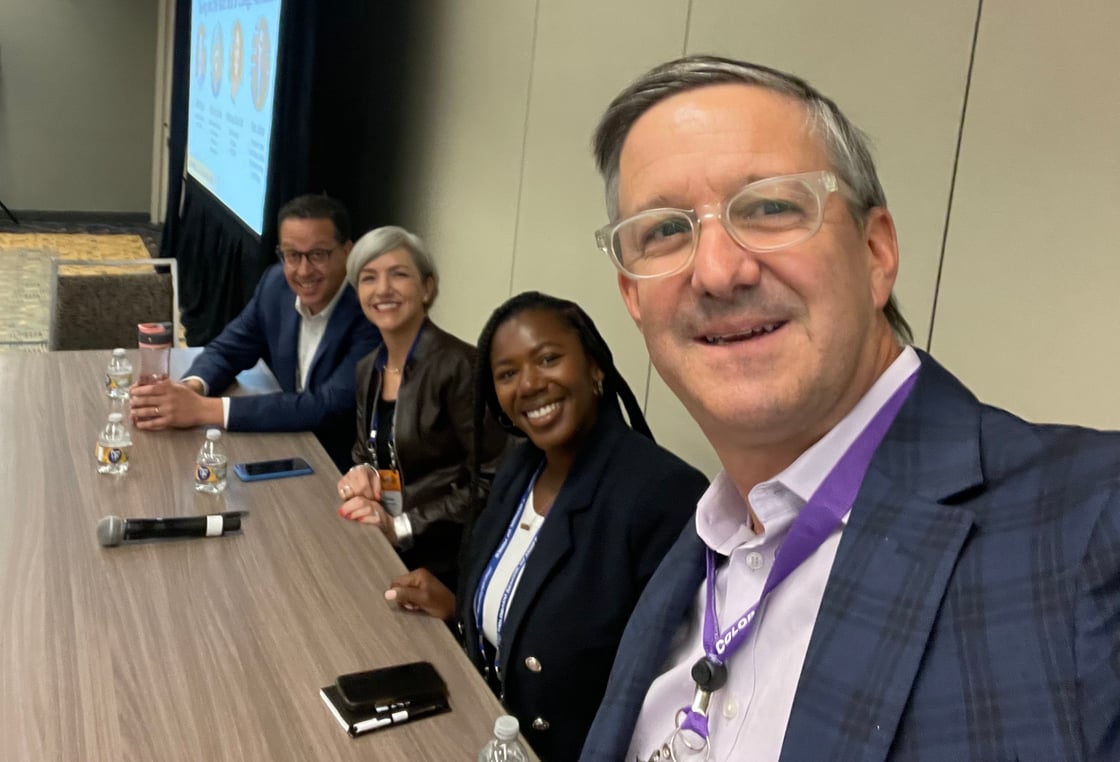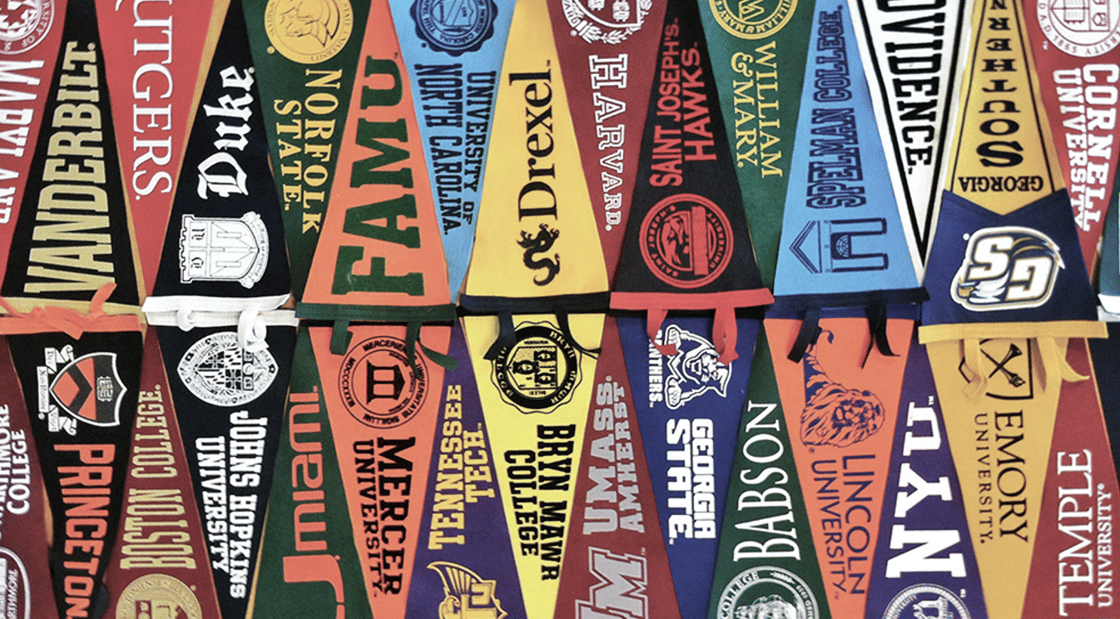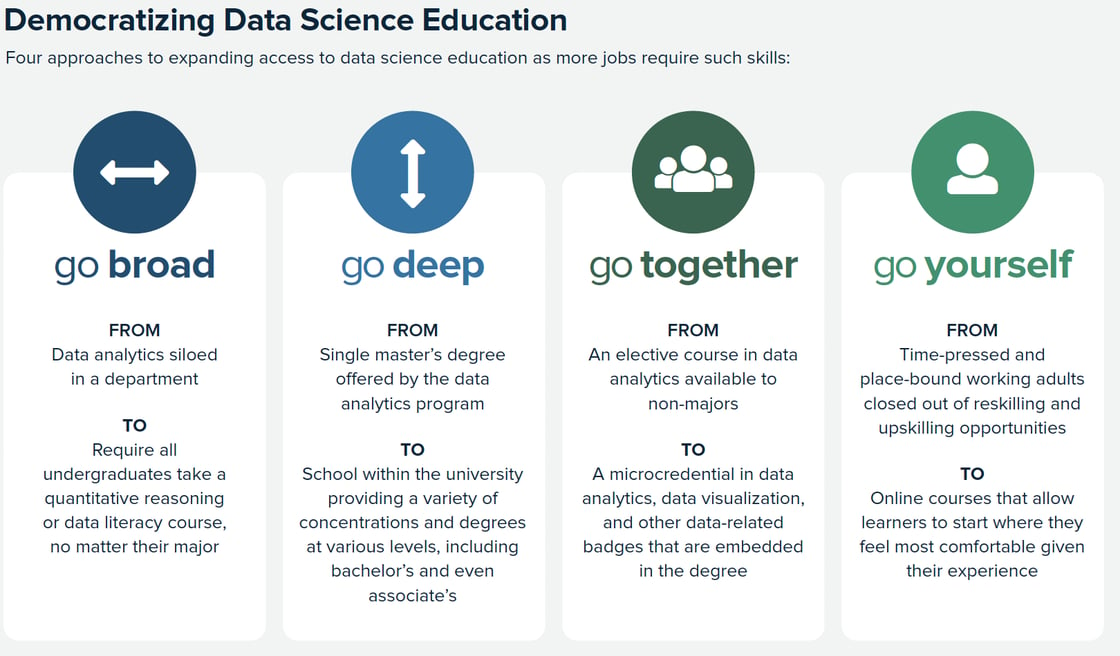|
There are two more parts to come in this series of papers. ⬇️ Download part one, “Building Data Talent for the Decade Ahead” (Support from Alteryx) |
🚨 The “Next Office Hour” for October will focus on artificial intelligence with two sessions:
|
🗃️ The black box of college admissions |
 |
The panel I moderated at NACAC’s annual conference last week |
Holistic admissions and financial aid are black boxes—and only colleges can see inside of them. Applicants, their families, college counselors, and increasingly lawmakers, all want more transparency.
Why it matters: The push for more transparency is driven by a huge surge in applications to colleges as well as financial-aid packages that often surprise families right before enrollment decisions need to be made.
Yes, but: How much information is enough? What information would be most useful? Those were two of the questions debated during a panel I moderated last week during the annual conference of the National Association for College Admission Counseling (NACAC) in Baltimore.
—More information creates either “a false sense of security about outcomes” or “stops students before they apply,” Soule added.
Where information helps: Whitney Gouché, a vice president at EMERGE, a college-access group in Houston, recalled an information session with a competitive engineering college in California (which she lightheartedly didn’t name) where admissions officers shared that if applicants don’t have AP Calculus BC they might not get accepted.
How about test-optional? Right now, applicants and counselors want data that could help them decide when and where to submit test scores.
👏 The biggest applause lines: Came after Gouché and Ron Lieber, a columnist for the New York Times and author of The Price You Pay for College, called for colleges to offer more up-front pricing information.
What colleges say matters: And students often respond accordingly. Soule ended our panel with an interesting anecdote about the time a few years ago when Penn announced its new class and said that, among other attributes, one-third of students did research.
Bottom line: Higher ed is a business, and like any business, colleges will only be transparent with information in ways that serve their priorities. Nearly every college wants an admissions funnel filled with lots of prospects at the top. Anything that reduces that number—whether it’s pricing information or data on who really gets in—isn’t ultimately in their best interest. There’s only one thing that will change this dynamic: Congress (and they can’t even pass a budget). |
🔥 The best higher ed “brands” |
 |
Whenever a scandal erupts on a campus—such as Michigan State recently or the University of Southern California seemingly every year—there is inevitably a news story about the impact on the school’s brand and ultimately its enrollment and fundraising. Yet some brands in higher ed are like Teflon—they can’t be pierced.
What’s new: Rather than traditional academic metrics or employment outcomes, a ranking of “global university brands” by American Caldwell, a Washington DC-based marketing firm, tracked news mentions of universities as well as social media following, public interest level, web citations, and website visitors.
By the numbers: Harvard University, probably not surprisingly came out on top, but the first 20 spots did have a few surprises when compared to other rankings such as U.S. News.
Why it matters: Ultimately, like most rankings in higher ed, it doesn’t. But as American Caldwell’s Nino Alexander Kader told me, if you’re choosing “between two schools that are relatively unknown, you probably want to go to one more employers have heard of.” And that’s what a lot of this ranking comes down to: places that tend to be in the press more often.
|
Supplements |
💪 Building resilience. Colleges says they can’t keep up with the demand for mental health services. Rather than struggle to keep up, Jim Gash, president of Pepperdine University joined Michael Horn and me on the latest episode of Future U. to tell us about how the university “moved upstream” by integrating resilience across the curriculum from academics to residential life to social programming. It’s an interest case study for other colleges. (Future U.)
⏲️ The new FAFSA is coming soon? Hopefully. The simplified Free Application for Federal Student Aid is expected to drop by December 1, two months later than normal. But now the threat of a government shutdown has financial-aid officials worried that the December date is in jeopardy. Either way, expect some changes to the outputs with the new form compared to the old one. Brookings has a useful interactive to simulate changes for hypothetical students. (Brookings) Until next time, Cheers — Jeff If you got this from a friend, see past issues and subscribe to get your own copy. |
|

